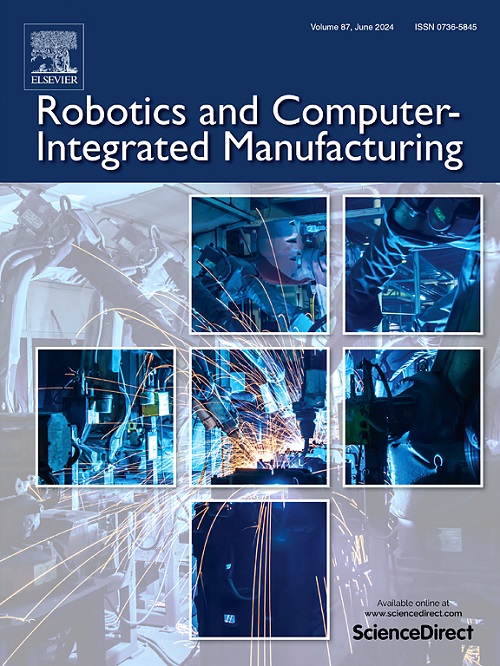A novel weld seam extraction method with semantic segmentation and point cloud feature for irregular structure workpieces
IF 9.1
1区 计算机科学
Q1 COMPUTER SCIENCE, INTERDISCIPLINARY APPLICATIONS
引用次数: 0
Abstract
The intricate surfaces of irregular structure workpieces present significant challenges for robotic welding path planning. To facilitate robot welding without teaching and programming, this paper proposes a weld seam extraction method that integrates semantic segmentation with point cloud features. This approach effectively harnesses the RGB-D information captured by an area array structured light camera. Initially, the K-Net model is employed for semantic segmentation of the workpiece using two-dimensional image features. This segmentation facilitates the coarse localization of the weld seam by extracting edges based on the segmented image mask, thus setting the stage for detailed weld seam extraction using point cloud features. Subsequent improvements in the DLP structured light vision imaging process allow for accurate edge point cloud reconstruction and adaptive extraction of ROI based on shape extension. The extraction of weld seam feature points is then performed using the LOBB feature extraction method, followed by a polynomial fitting of the weld seam using a least-squares approach. Experimental results indicate that the maximum error in weld seam extraction is less than 1.2 mm, with a root mean square error of less than 0.7 mm, and the algorithm completes its task in under 5 s, demonstrating the method’s efficiency and precision.
一种基于语义分割和点云特征的不规则结构焊缝提取方法
不规则结构工件的复杂表面对机器人焊接路径规划提出了重大挑战。为了方便机器人进行无需教学和编程的焊接,本文提出了一种结合语义分割和点云特征的焊缝提取方法。该方法有效地利用了区域阵列结构光相机捕获的RGB-D信息。首先,利用K-Net模型对工件进行二维图像特征的语义分割。这种分割方法基于分割后的图像掩模提取边缘,便于对焊缝进行粗定位,从而为利用点云特征对焊缝进行精细提取奠定基础。DLP结构光视觉成像过程的后续改进允许精确的边缘点云重建和基于形状扩展的自适应ROI提取。然后使用LOBB特征提取方法提取焊缝特征点,然后使用最小二乘方法对焊缝进行多项式拟合。实验结果表明,焊缝提取的最大误差小于1.2 mm,均方根误差小于0.7 mm,算法在5 s内完成任务,证明了该方法的效率和精度。
本文章由计算机程序翻译,如有差异,请以英文原文为准。
求助全文
约1分钟内获得全文
求助全文
来源期刊
CiteScore
24.10
自引率
13.50%
发文量
160
审稿时长
50 days
期刊介绍:
The journal, Robotics and Computer-Integrated Manufacturing, focuses on sharing research applications that contribute to the development of new or enhanced robotics, manufacturing technologies, and innovative manufacturing strategies that are relevant to industry. Papers that combine theory and experimental validation are preferred, while review papers on current robotics and manufacturing issues are also considered. However, papers on traditional machining processes, modeling and simulation, supply chain management, and resource optimization are generally not within the scope of the journal, as there are more appropriate journals for these topics. Similarly, papers that are overly theoretical or mathematical will be directed to other suitable journals. The journal welcomes original papers in areas such as industrial robotics, human-robot collaboration in manufacturing, cloud-based manufacturing, cyber-physical production systems, big data analytics in manufacturing, smart mechatronics, machine learning, adaptive and sustainable manufacturing, and other fields involving unique manufacturing technologies.

 求助内容:
求助内容: 应助结果提醒方式:
应助结果提醒方式:


